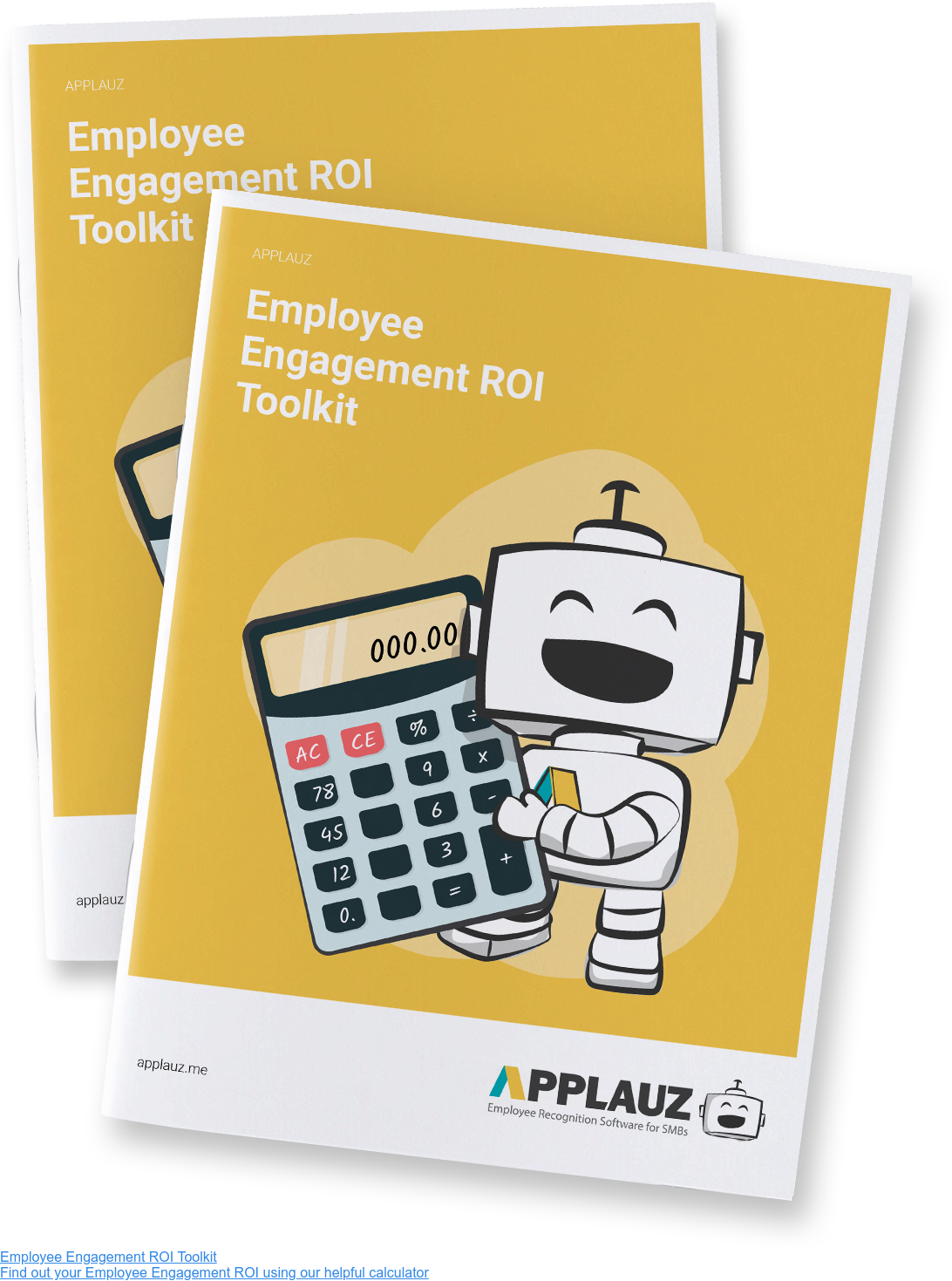MONTHLY NEWSLETTER:
Subscribe and join our community of curious HR Professionals and Managers.
Latest Article
Categories
Quick Links
Applauz Blog
Published: November 22, 2019
Last Updated: February 7, 2024
5 min read

Does employee engagement impact your customers? Of course, it does! When leaders prioritize employee well-being satisfied, loyal customers will follow.
Have you ever had a negative customer experience in your neighbourhood Starbucks? Chances are probably slim.
Starbucks is known for one thing other than colourful and delicious caffeinated beverages, and that's ultra-friendly and highly personalized customer service. The upscale experience received at Starbucks justifies the few extra dollars on the price tag.
Not only are most people willing to dish out more money for the same cup of coffee as the place next door, but Starbucks enjoys an almost cult-like loyalty from its customers. Starbucks has even been dubbed "The King of Customer Loyalty."
How has Starbucks managed to drive unprecedented customer happiness and loyalty?
The superior customer service and loyalty you find at Starbucks is no coincidence. Starbucks executives intentionally engineer it.
Execs at Starbucks know that customer satisfaction and fidelity in the service industry begin at the foundation of the company: front line employees.
As a case in point, Starbucks ranks 47th in Fortune magazine’s "best place to work," and also boasts some of the lowest employee turnover rates in the fast-food industry.
Baristas are trained from day one to deliver a superior and friendly experience, of course. But this goes deeper than just training — influencing these actions are company values baked into the ethos of the organization, which ultimately disseminate throughout every level of the business.
Values and beliefs such as respect, fair compensation, career and personal growth, and work-life balance are all mirrored in the higher-level initiatives that impact the day-to-day lives of front line employees.
For example, Starbucks refers to its baristas, not as employees but as "partners." Partners are privy to Starbuck's generous policy of offering health insurance and stock option to even the most entry-level positions.
Moreover, partners who show personal interest in coffee are offered learning opportunities to be trained as a "Coffee Masters," for example. This particular role is acknowledged with the designation of a black apron.
These engagement initiatives result in happier employees, which in turn results in happier and more satisfied customers. In fact, partner satisfaction at Starbucks is known to hover around 80%-90%, well above the industry average.
Happy Employees means happy customers.
That said, if your business deals with all types of customers with various needs and personalities, you might be thinking this model is a little TOO simplistic.
This is somewhat true. Customer satisfaction is indeed complex. Customer happiness is driven by more than just happy and smiling employees. However, it's undeniable that ensuring employee happiness is a very important place to start.
So — let's dive a little deeper and pick apart the anatomy of a happy customer, which can be broken down into three main dimensions. We will explore exactly how employee engagement impacts each of these dimensions of client happiness.
More importantly, we'll explore some concrete actions your organization can take to engage employees and produce happier and loyal customers actively.

We can all think of a time we received excellent customer service.
Maybe a front desk clerk at a hotel upgraded your room free of charge. Or a customer service agent waived a service fee as a gesture of goodwill.
A consistent theme runs through all these examples is that all these service employees are highly engaged.
How do we know this? Because employees that deliver top customer service intentionally go beyond the minimum of what is expected. Passion and ownership underpin their work. When employees are engaged, they are fully immersed; it's not just about a paycheck. There is a personal and intrinsic motivation to deliver excellence.
Ultimately, when employees take these initiatives to go above and beyond, it helps customers save time, money, or teaches them something new, resulting in happier and more satisfied customers.
Organizations can cultivate an environment where going above and beyond is the norm with an Employee Engagement Program.
First, when it comes to work quality, make sure to hold your employees to a high standard. When you raise the bar, most will climb to meet it. At the very least, those who fall behind will become easier to identify.
Expectations can be communicated with an Employee Recognition Program like Applauz Recognition by publicly recognizing, praising, and rewarding employees that set a good example. Shining a light on top-performing employees sets a precedent for all other employees to meet the same quality standards.
Imagine an individual who is highly active or an "outdoorsy" type. They have an appreciation for products designed with performance in mind — valuing function over form.
This type of consumer will feel the most satisfied and happy buying from businesses that share this value.
This is the essence of brand affinity. When clients believe a purchase is compatible with their beliefs and values. This results in a positive feeling of belonging and community, instead of just a transactional exchange — ultimately resulting in long-term happier customers.
Picture walking into a curated boutique with products for the type of consumer described above. The sales associates should also true believers in the brand and product. Ultimately, this will result in the most positive experience for customers.
That's because client-facing employees are the quite literally face of a brand. They should be carefully recruited to ensure that they are genuinely enthusiastic and passionate about the brand, its products, beliefs, and mission. It's more than just a job. In short, employees should take pride in working for the company.
As a result, clients that walk into this store will be experiencing much more than a simple transaction. They are building relationships with a sales associate that is built on similar interests and passions. This leads to happier and more satisfied clients in the long run.
Have you ever dealt with a business or associate that made you feel like your presence was a nuisance...How did that cold "give me your money and go" transaction make you feel? Probably like you're not valued as a person, let alone as a customer.
Let me guess — you never gave them your business again.
Perhaps the employee was having a one-off lousy day, but it's likelier that you interacted with an employee that feels undervalued and disengaged themselves.
The business probably does not understand the value of actively engaging employees; believing that situational forces such as personal life stress are pulling an employee's attention in all different directions. In short, it's outside of their control. Someone either has a good attitude towards their work or not — right?
Despite any personal issues an employee is going through, the ability to verbally recognize and appreciate employees is always in the employer's control.
It's surprisingly easy and cost-effective to actively engaged employees. A simple "thank you" or word of verbal validation and appreciation and praise is most appreciated. A survey of U.S. workers showed that 83% of people said verbal recognition was more fulfilling than any rewards or gifts.
When employees get the sense that their presence and work are valued, they will be inclined to perform better and will naturally deliver more value to customers as well.
When you value and appreciate employees as unique people — not just a resource to meet your bottom line — it sparks positive feelings. In turn, employees will value and recognize customers as more than dollar signs walking through the door.
Remember: In personal or professional relationships, people don't ever enjoy feeling like a means to an end.
Of course, in the context of work, the reality is that employees are the main drivers of a business. However, engaging employees with genuine recognition helps to mitigate these feelings.
As a result, engaged employees will be more invested and, therefore, more willing to take their time with each client and personalize their experience. If employees are engaged, they will project this to the consumer; long-term customer loyalty should be the ultimate result.
Category Tags
Employee Engagement
MONTHLY NEWSLETTER:
Subscribe and join our community of curious HR Professionals and Managers.

7675 Blvd Saint-Laurent,
suite 201,
Montreal, QC,
CA, H2R 1W9
7675 Blvd Saint-Laurent, suite 201, Montreal, QC, CA, H2R 1W9
Contact us
1 833 277 5289
Contact us | 1 833 277 5289
Follow us on LinkedIn:
© Copyright 2024. All Rights Reserved